Throughout this report, you'll see that manufacturing marketers have become more strategic with their content marketing approach, are more effective in distributing their organization's content, and face fewer challenges when attempting to communicate more complex ideas to their audiences. While there have been improvements like these, only 40% of marketers are strategic about the content they create and target their content for specific stages of the customer journey.
Every year, the Content Marketing Institute, alongside Marketing Profs and Sitecore, conduct a content marketing survey sponsored by IEEE GlobalSpec.
For the 10th annual content marketing survey, 1,798 marketers in the B2B manufacturing industry were surveyed. Their insight is crucial to understanding the dynamics of their content marketing teams, their content creation process, and content marketing goals, among other factors.
To give you a broader understanding of the current state of content marketing in this industry, we will be sharing the survey's 2020 Manufacturing Content Marketing findings.
Overall, the evidence shows a growing trend among manufacturing marketers to create content that targets various audiences along the different stages of the buyer's journey and a more exceptional ability to distribute it.
Content Marketing Success Level
Overall, 68% of organizations report their content marketing success as moderately successful. This shows that manufacturing marketers are doing something right to achieve such a level of success. It also means that there are some areas of opportunity where manufacturing marketers can improve.
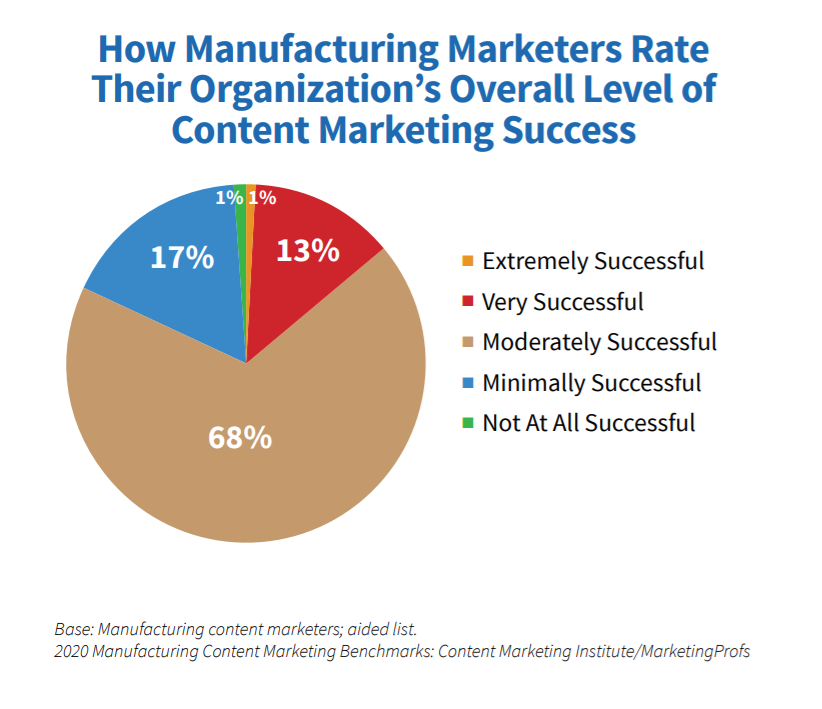
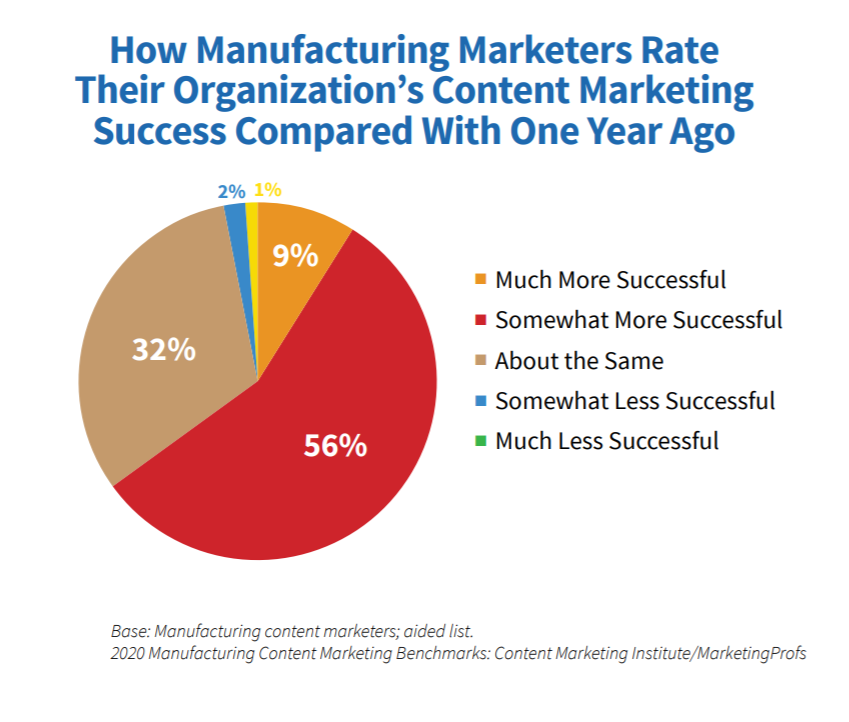
When they compare this year's content marketing success with that of last year's, 56% of marketers claim they are somewhat more successful. Progress, no matter how small, is essential for any marketing team and should be encouraged.
Documented Content Strategy
B2B manufacturing companies are likely to see an improvement in their content marketing strategy when they have a documented plan for its execution.
Luckily, 41% of marketers have this for their content strategy, up from 21% last year.
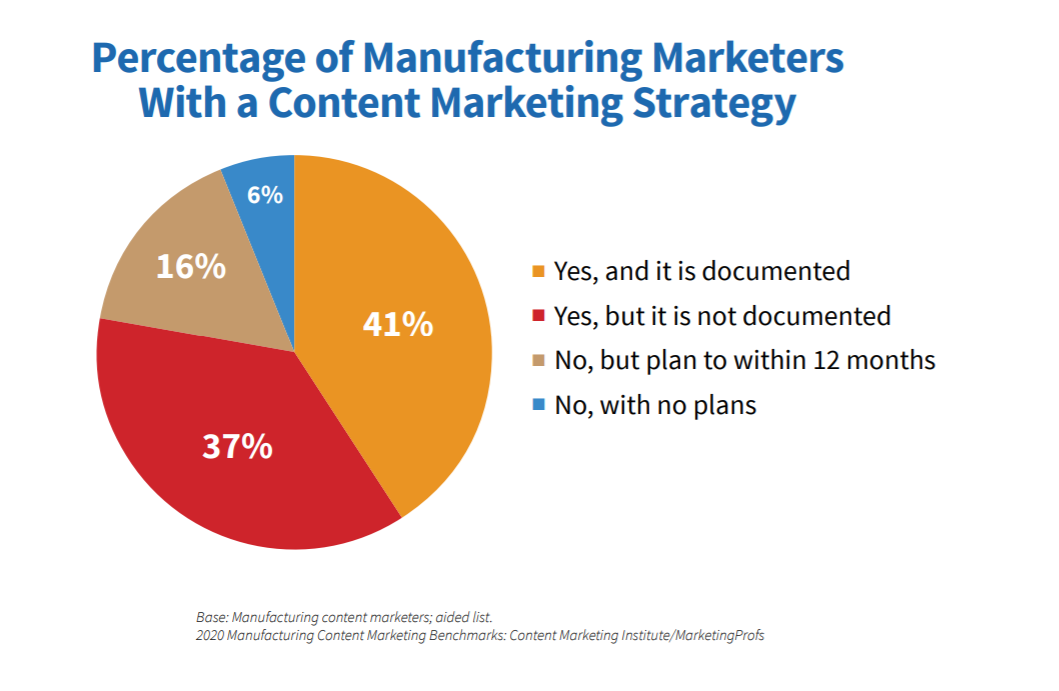
So it's great to see that more and more content marketers have a content marketing strategy, whether it's in a Word document, a Google document, Excel, or something fancier. Out of all respondents, 41% say they have a documented content marketing strategy in 2020.
Content Marketing Maturity
The maturity of an organization's content marketing refers to how developed its strategy is. On average, 39% of manufacturing marketers report their business is in the adolescent stage of content marketing maturity.
While this is good news, it hints at the opportunities for growth, including learning how to integrate content marketing across all areas of an organization.
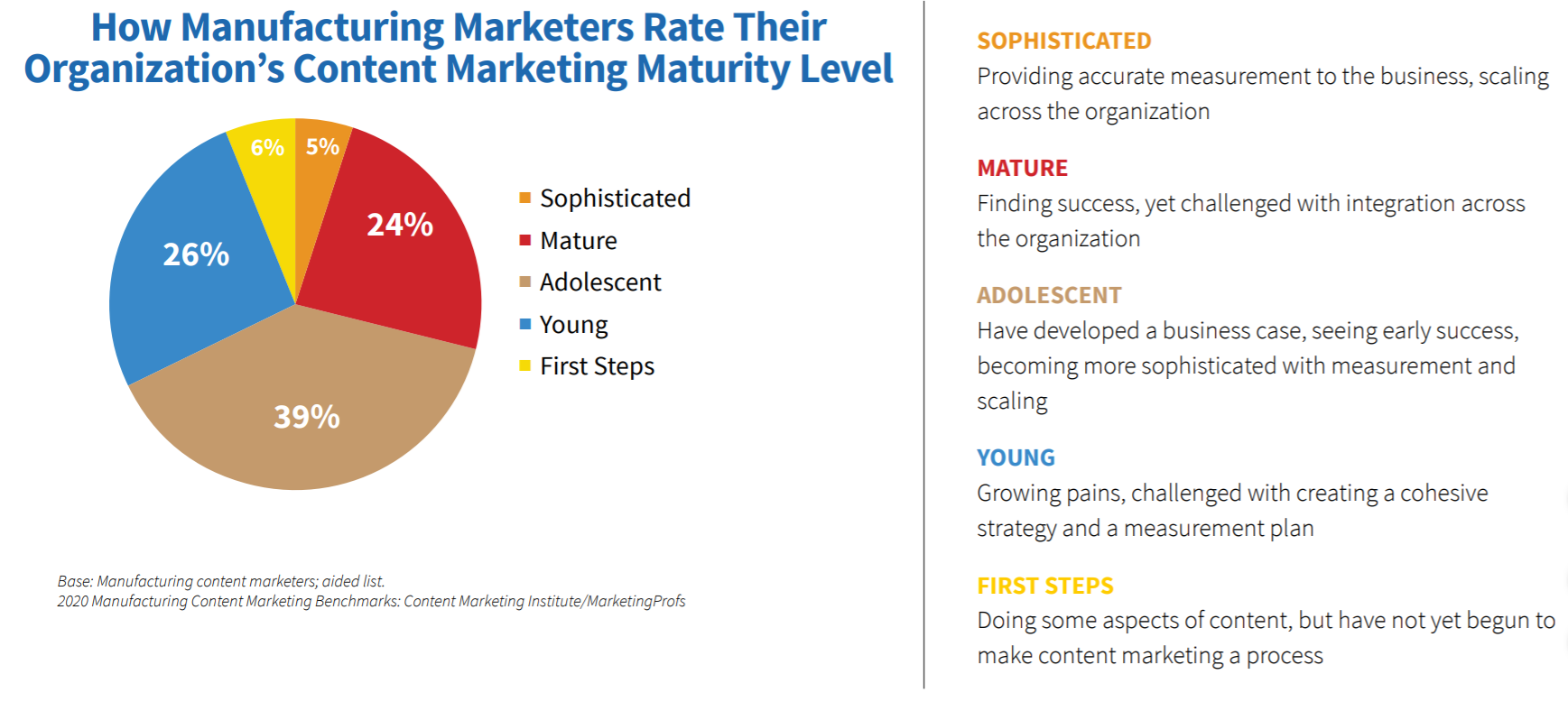
An essential part of achieving content marketing maturity is determining the values that will drive content creation. In this study, 81% of marketers believe their audience sees their organization as an authoritative resource.
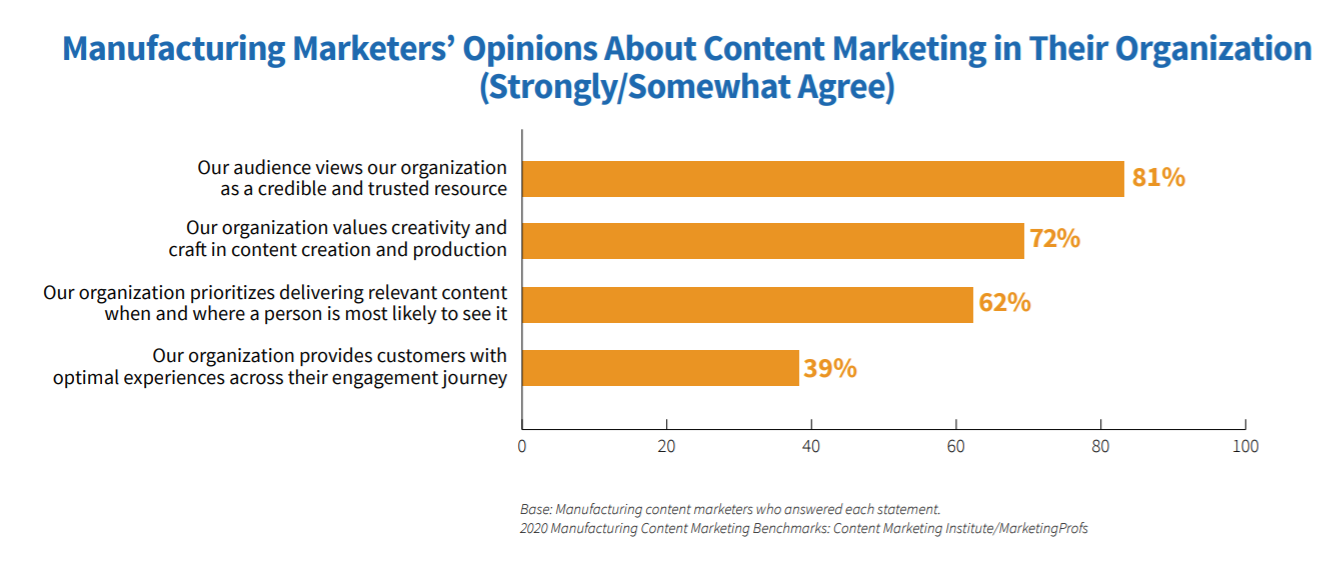
72% of marketers prioritize content creation and production over other factors. Delivering quality content ensures it is likely to receive more social shares, helps with brand awareness, and provides a more significant experience for prospects.
It also includes 62% of marketers who believe their business prioritizes distributing content when and where their targeted audience is likely to see it.
Crafting content that targets prospects across their engagement journey appear to be the most significant area of opportunity, with only 39% of marketers prioritizing this.
Content Marketing Team Size
Thirty-four percent of B2B manufacturing companies report that the average content marketing team consists of 2-5 people. These individuals are employed full-time and are expected to complete tasks such as: creating quality content, distributing this content, and analyzing its performance for greater outreach.
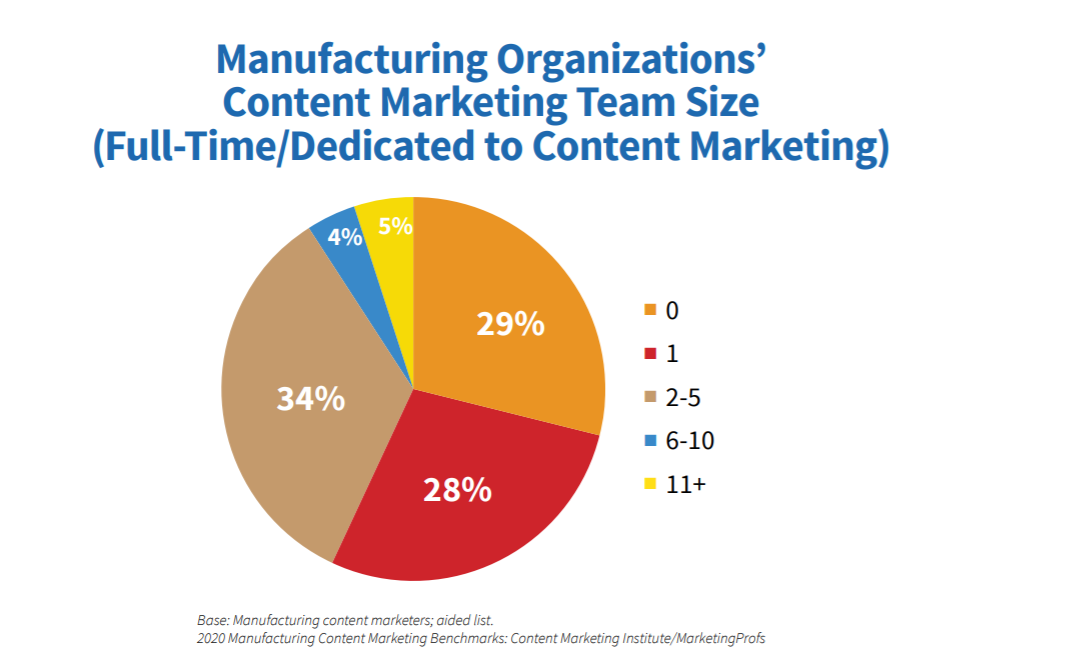
Outsourcing Content Marketing
On average, 64% of marketers outsource their team's content marketing activities. Content creation is most likely to be outsourced, with 87% of marketers doing so.
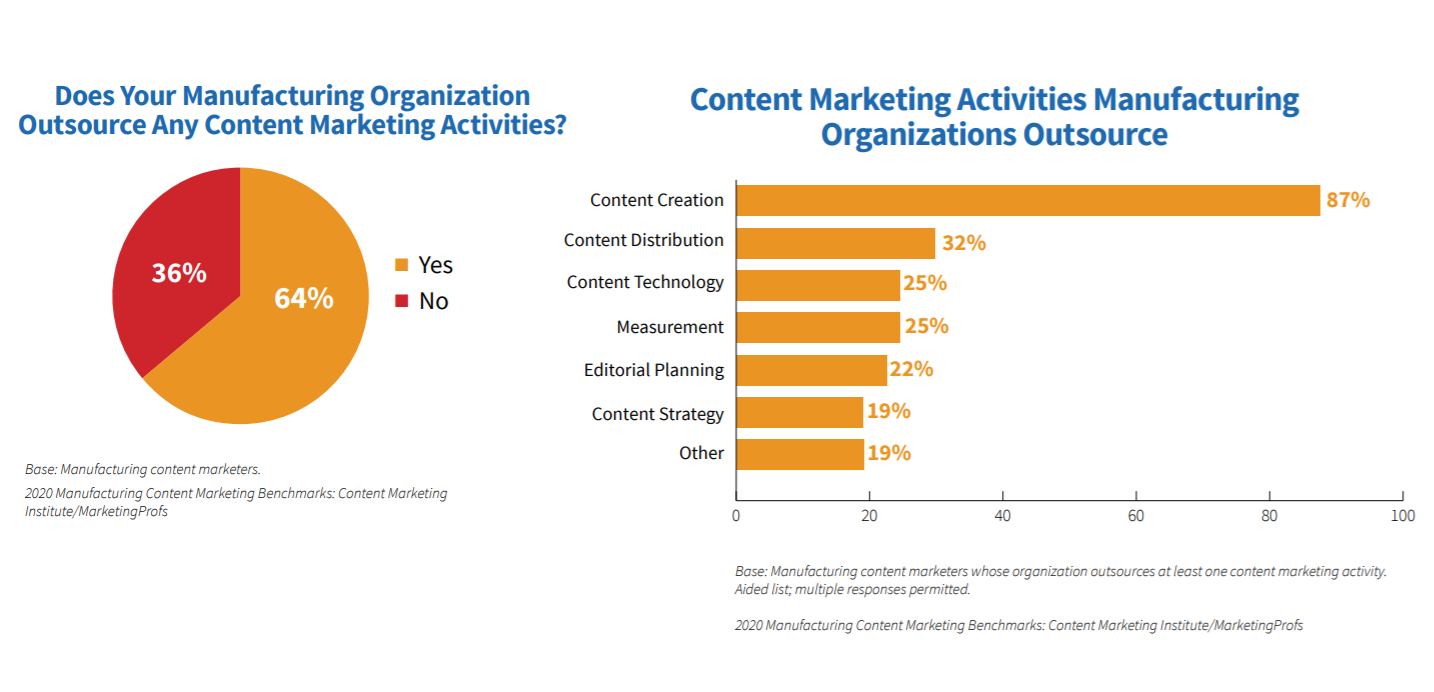
If the average B2B manufacturing organization hires a 2-5 content marketing team, and 87% of these teams outsource their content creation, then most content marketing teams focus on editorial planning, content strategy, content distribution, and content measurement activities.
Technology in Content Marketing
Manufacturing marketers use different technologies to distribute their content marketing. The top three tools used for this are analytics tools, which include web analytics (83%), email marketing software (82%), and social media publishing/analytics (82%).
From this information, we can conclude that the top three ways marketers distribute their content marketing are through their website, for which they use web analytics software. They also use email marketing software to distribute content to their email subscribers and social media analytics to oversee its distribution on various social media platforms.
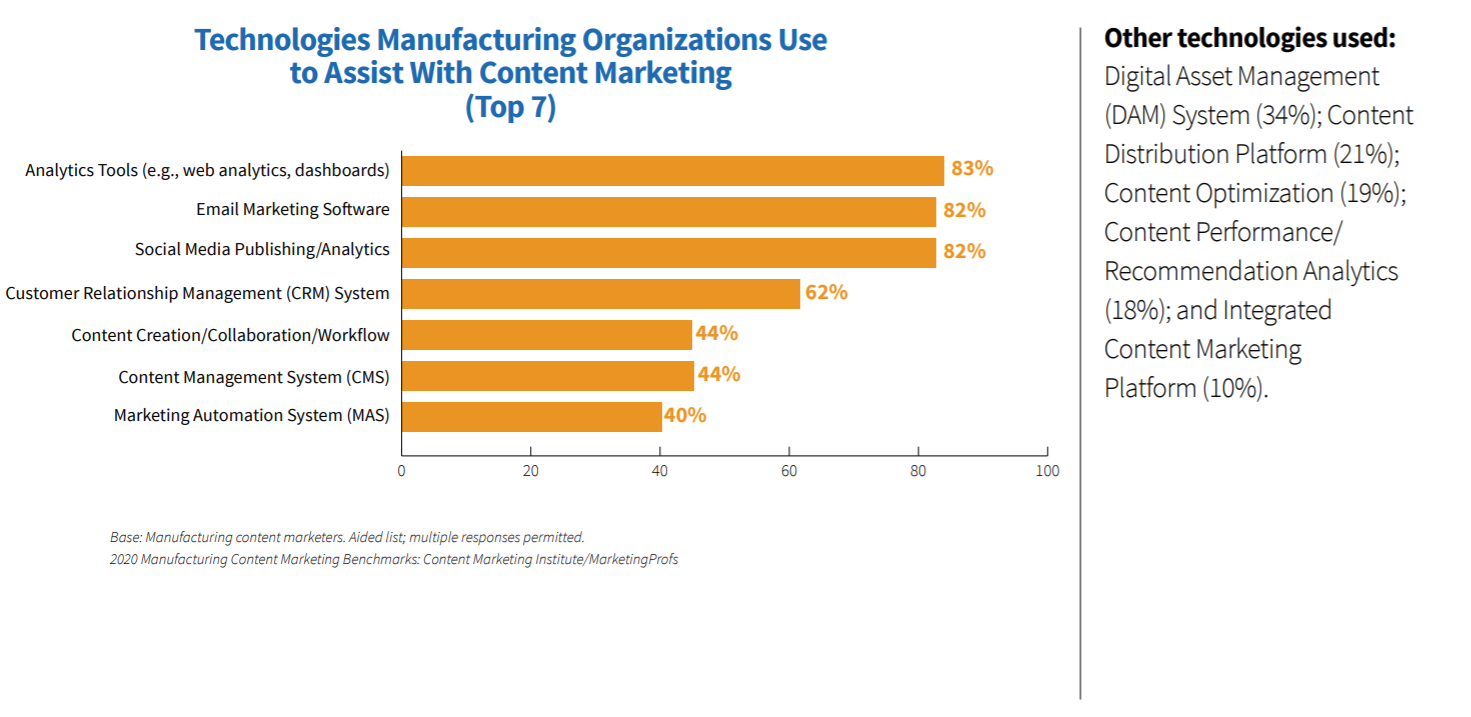
The survey provides a listing of the least popular technologies used. For example, a mere 10% of manufacturing organizations use an integrated content marketing platform. An integrated content marketing platform helps track analytics across social media, email marketing, and content management systems.
As a manufacturing business, you can use this benchmark as a reference to what most of your direct competitors are using to deliver their content to prospects. It may serve to your advantage to consider the lesser-used options, which could bring an edge to your content marketing strategy.
Content Marketing Goals
Creating brand awareness has remained the top priority for manufacturing marketers, more so in 2020 than in 2019 (85% vs. 79%). However, for continued success, content marketing should prioritize generating sales and revenue more. After all, this is the primary reason for creating a content marketing strategy.
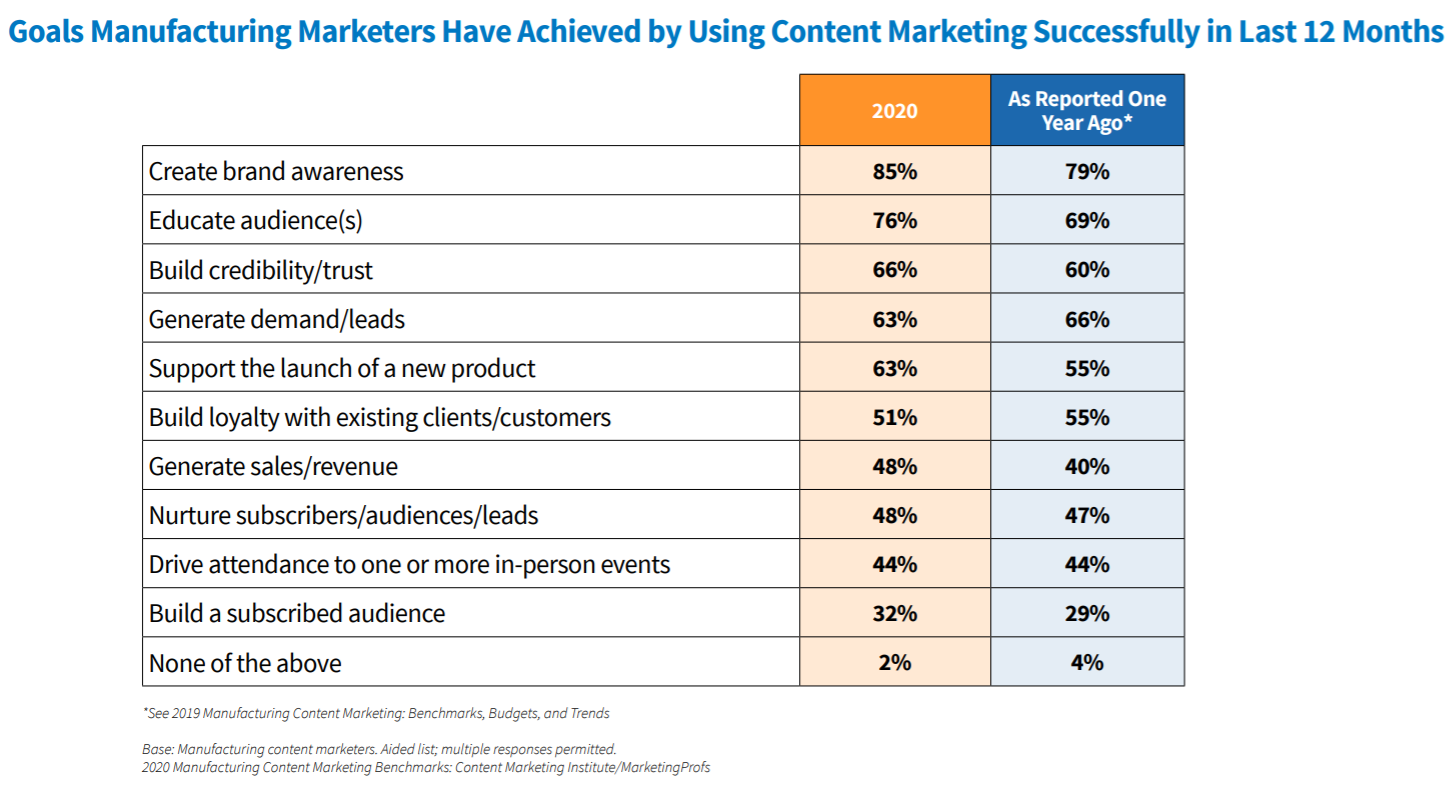
How Content is Created
While 84% of manufacturing marketers fact check the information that goes into their content, 51% prioritize an audience's need for quality information over the organization's need to promote itself.
Both of these objectives are on the right track, and a growing number of marketers should prioritize these, even more, to deliver better experiences to prospects and customers.
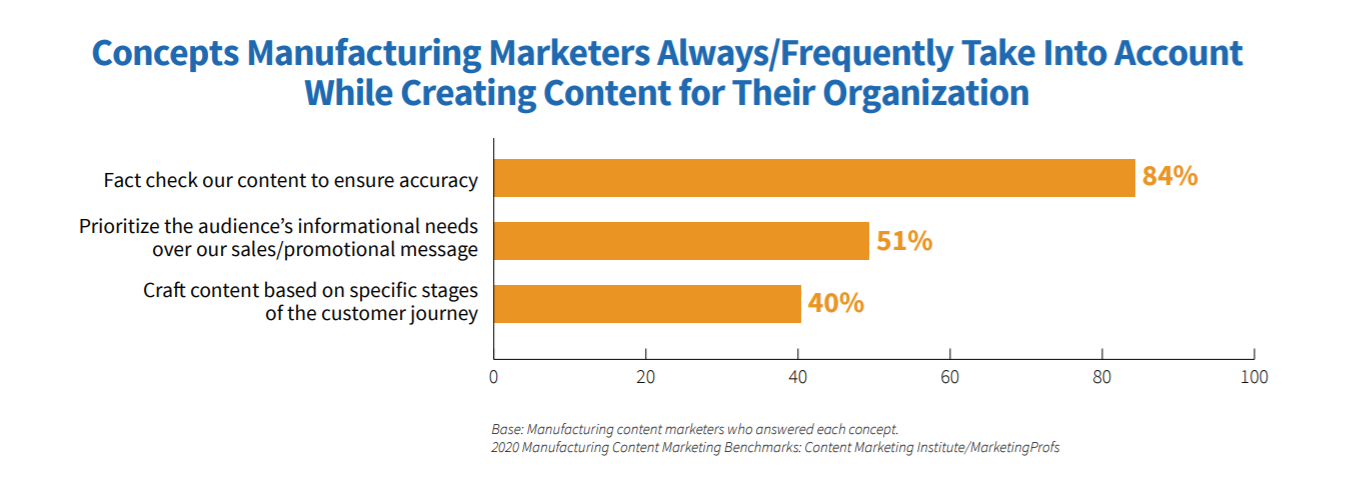
Only 40% of marketers prioritize creating content that targets prospects from specific stages of the customer journey. Doing so provides organizations with the opportunity to attract and engage with a greater audience.
The Customer Journey
50% of the content created by manufacturing marketers over the past year is top-of-the-funnel material aimed to generate awareness and interest in a business brand or a product or service.
21% of the content produced corresponds to mid-funnel content, where prospects are in the consideration stage. A small 15% of marketers produce content in the late evaluation or purchase stage. Finally, 10% of marketers craft content in the post-sale stage, meant to cultivate loyalty and brand advocacy among paying customers.
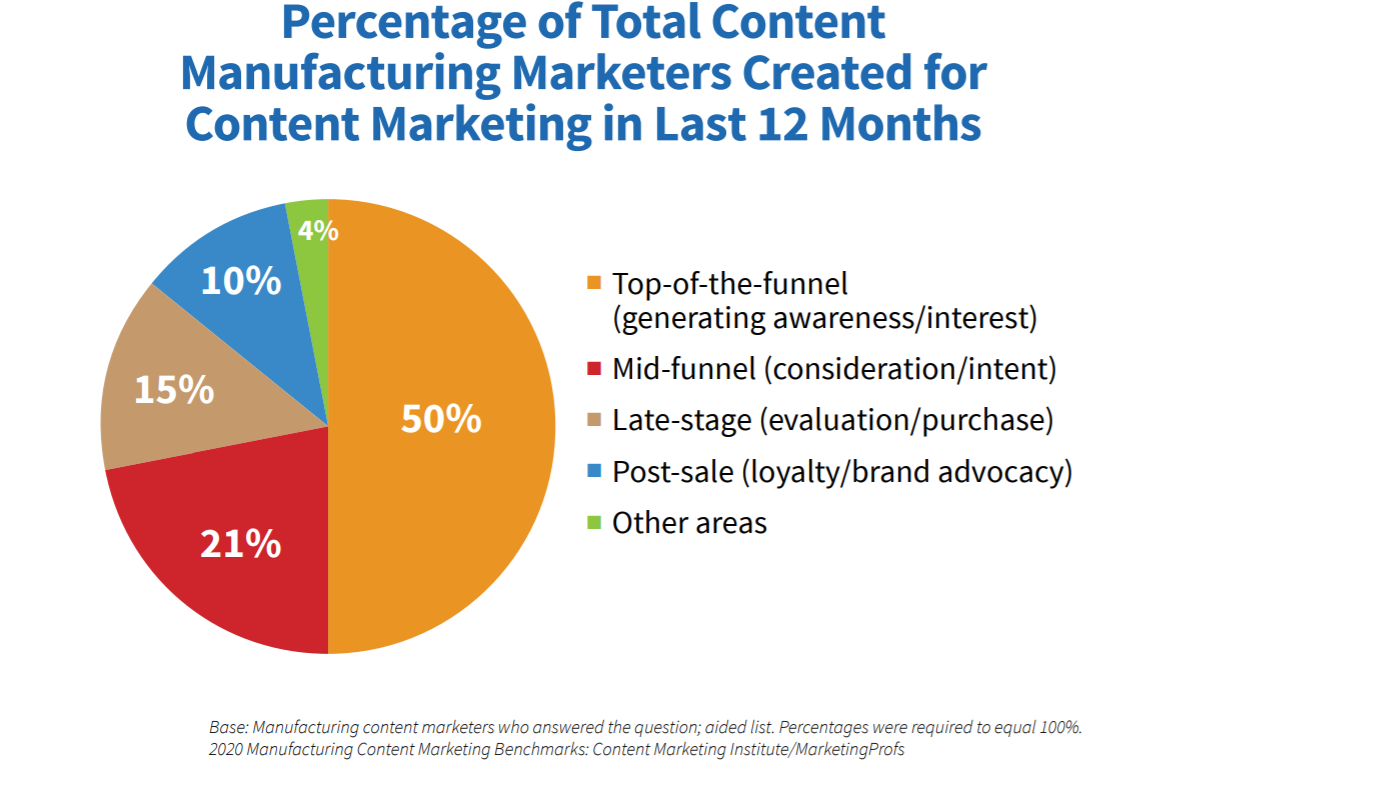
With this information, it's safe to say that most of the content marketing efforts from manufacturing companies aim to generate interest in its brand. Organizations that follow this strategy would do well in concentrating on the other stages of the customer journey to ensure that their current prospects become paying customers.
Overall content distribution
The graphic below breaks down the highest performing content types according to the different stages of the customer journey.
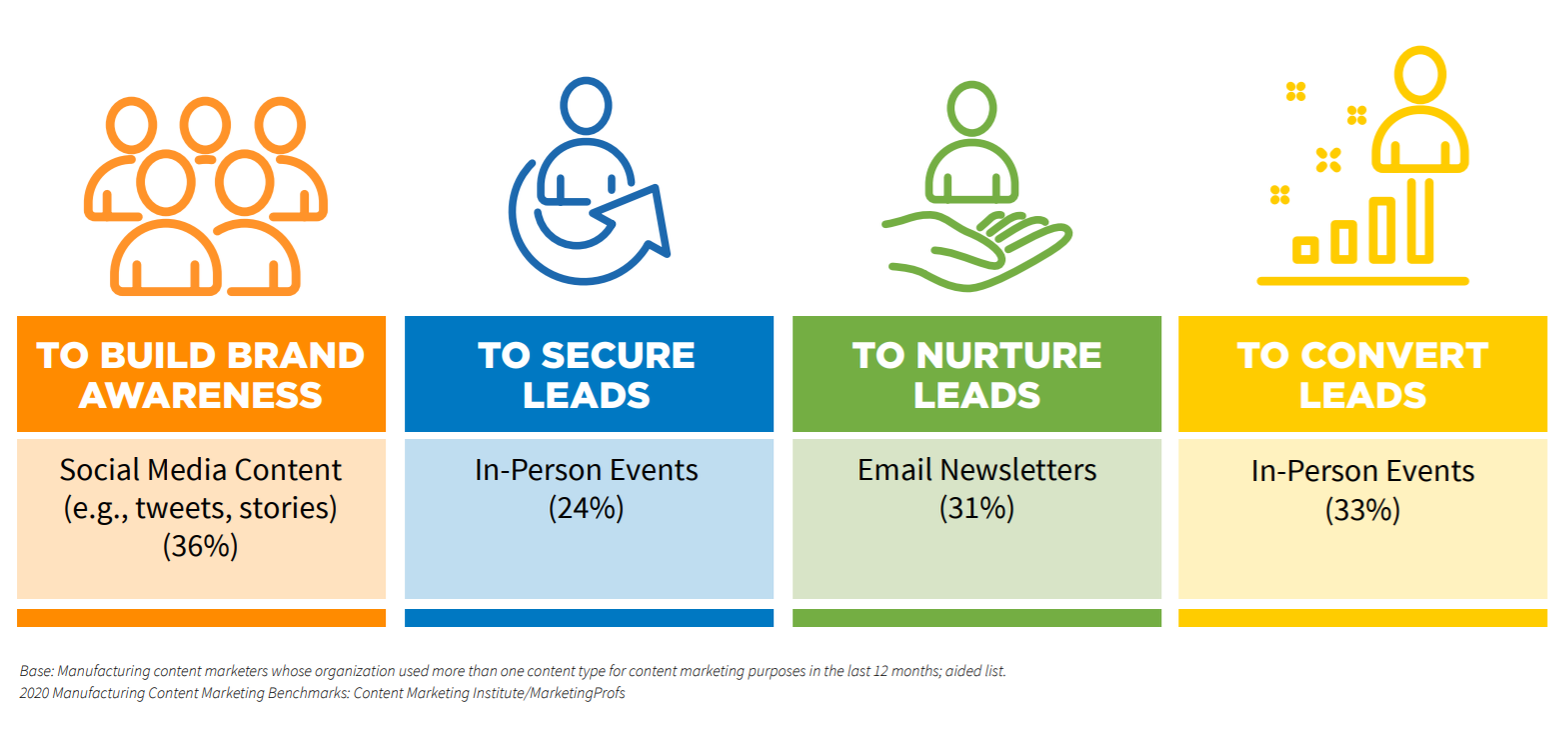
To build brand awareness (top-of-the-funnel), 36% of manufacturing marketers rely on social media activities like tweets and stories. To secure leads (mid-funnel), 24% of marketing professionals use in-person events. To nurture and convert leads (late stage), B2B marketers use email newsletters (31%) and in-person events (33%).
Organic distribution of content
The most efficient way that B2B organizations distribute their content organically is through their various social media profiles. Social media happens to be one of the best ways to build brand awareness within target audiences.
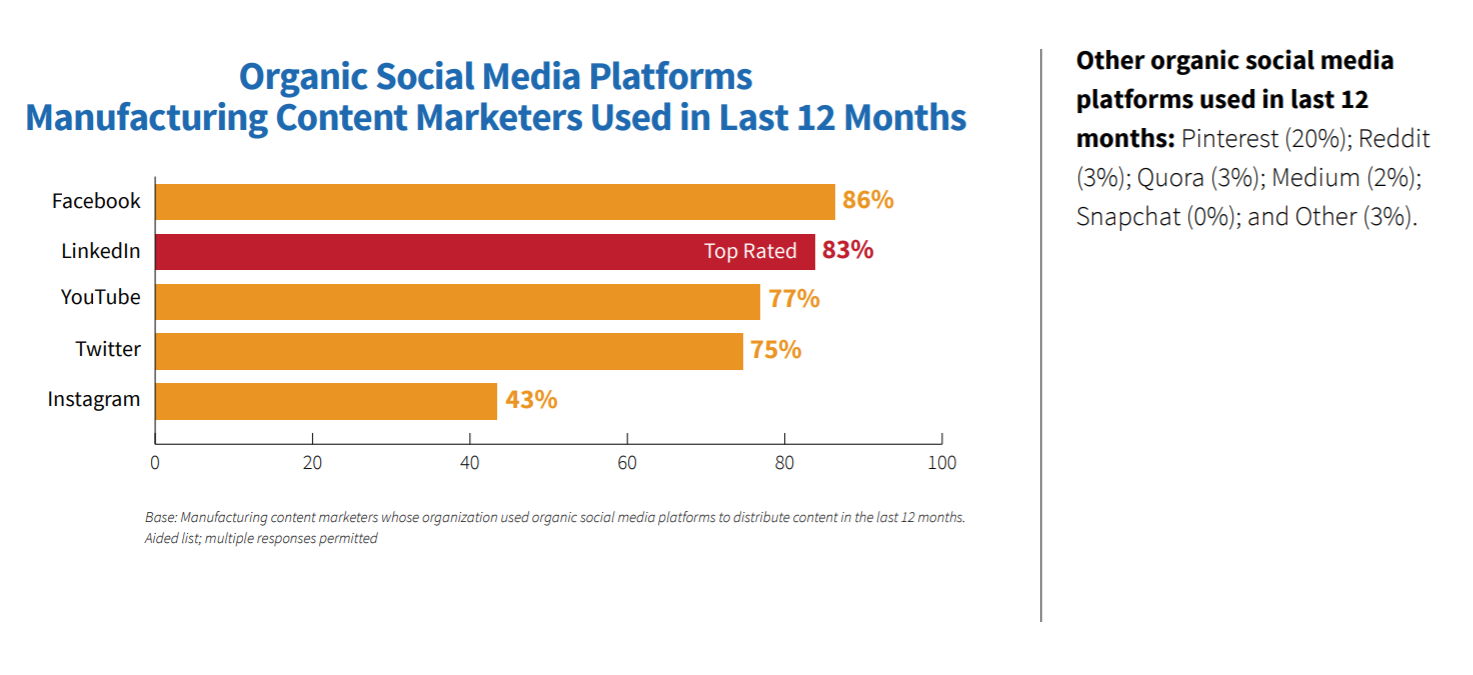
The evidence demonstrates that Facebook (86%) and LinkedIn (83%) are the top-performing social platforms used by manufacturing companies.
Paid Distribution of Content
A whopping 93% of manufacturing organizations pay for the distribution of their content.
The primary paid distribution channel for content is social media advertising, with 66% of marketers using it. This gives further proof that social media is at the forefront of most B2B manufacturing organizations' content marketing strategies.
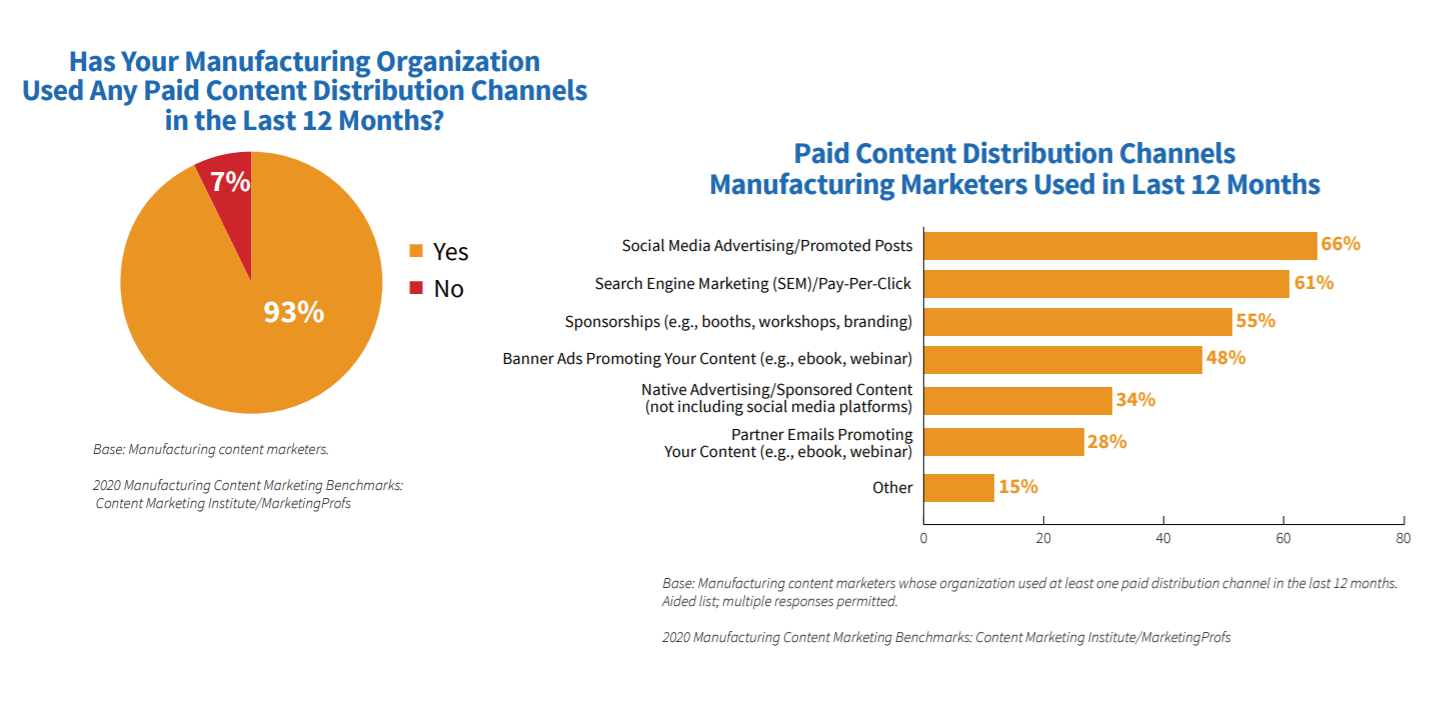
PPC advertising follows with a close second, with 61% of marketers employing this approach and sponsorships through online workshops and branding are a close third with 55%.
Key Performance indicators to Measure Content Marketing Success
Key performance indicators (KPIs) are particularly crucial for measuring an organization's content strategy performance. Marketers invest resources in the creation and distribution of content, and they need to know if their current strategy is effective and if any changes need to be made.
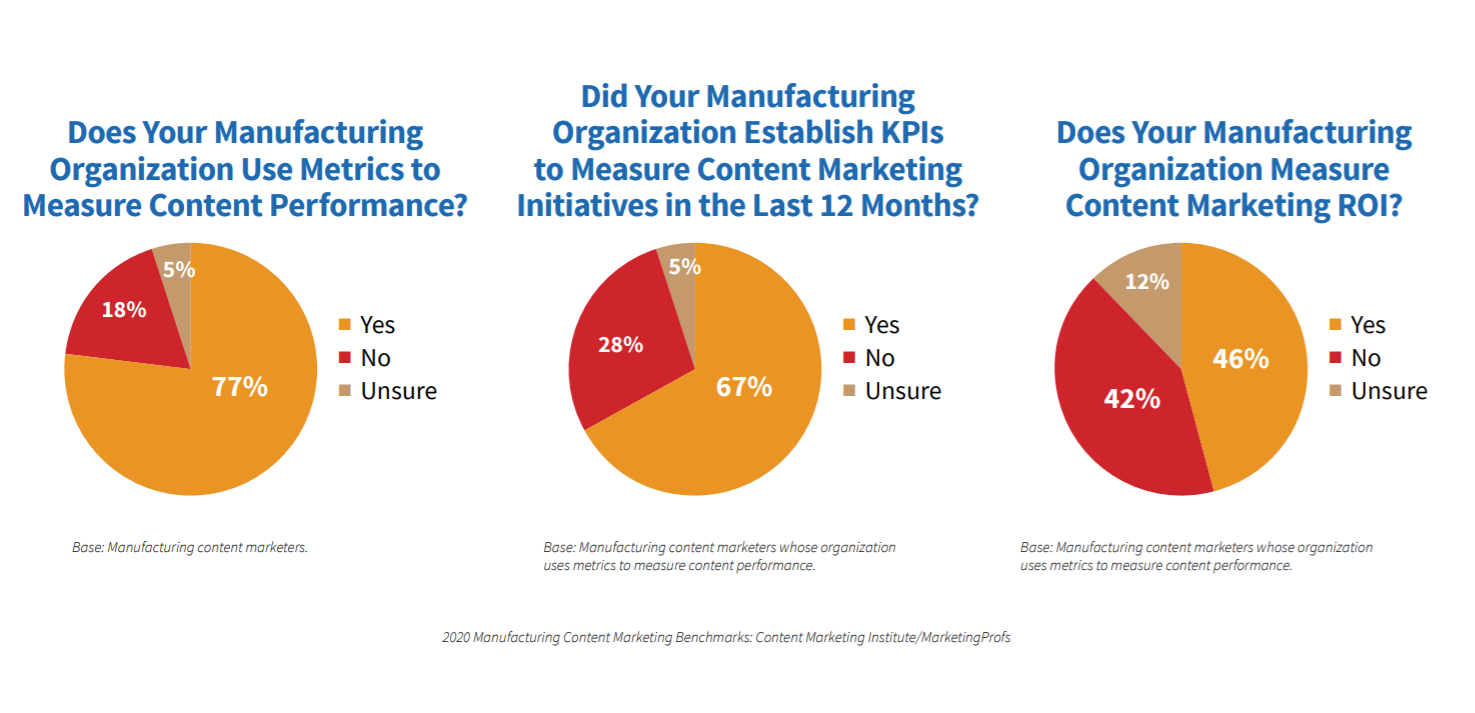
For 2020, 77% of manufacturing organizations use metrics to measure their content performance up from 67% of organizations a year ago.
However, only 46% of organizations measure their content marketing ROI when compared to 42% of organizations that don't.
It shouldn't come as a surprise that the top metrics tracked are social media analytics, with 88% of marketers focusing on this. If we recall, social media advertising is the top paid effort for distributing content among manufacturing marketers. It makes total sense that the top KPIs correspond to how well these ads are performing.
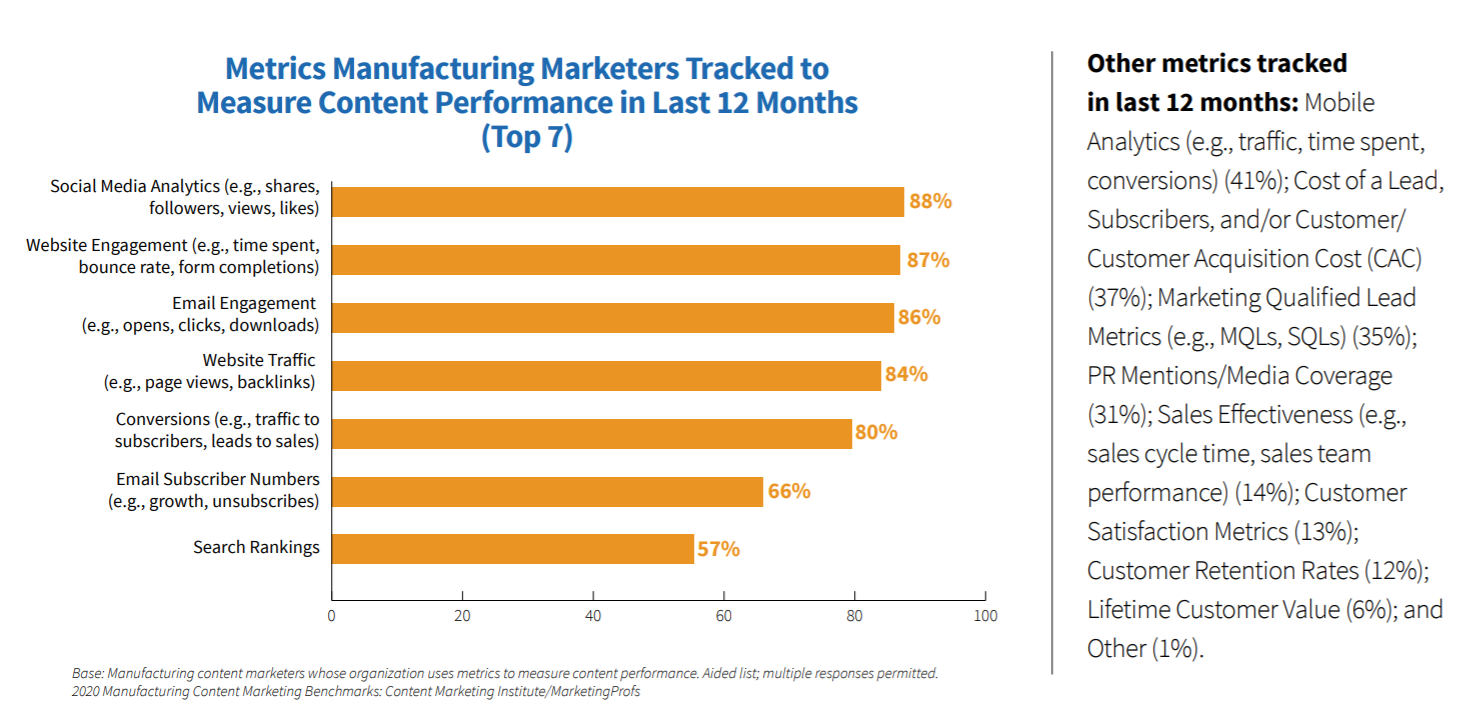
The second most tracked metric is website engagement, an important KPI for SEO purposes. 87% of marketers use it to measure the time visitors spent on their site, the website's bounce rate, and overall engagement.
Other metrics marketers pay attention to include open rates and the number of downloads from email engagement (86%) and website traffic, including page views and backlinks (84%).
Content marketing Budgeting and Spending
In 2019, the average content marketing budget was $285,000. Forty-one percent of marketers reported a content marketing budget of $100,000 or more, and 30% reported a budget for less than $100,000.
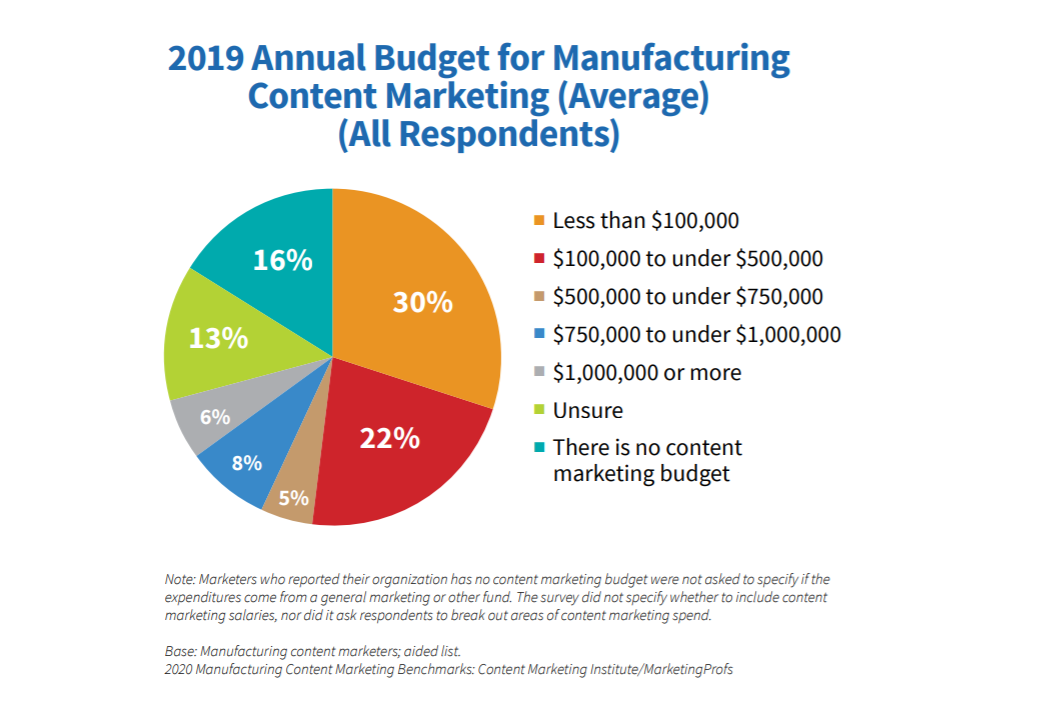
With this year's survey data, we can compare how content marketing budgets differed from one year to the next.
Overall, 38% of marketers expected their content marketing budget to remain the same. A close 35% of them expected their budget to increase between 1% and 9%.
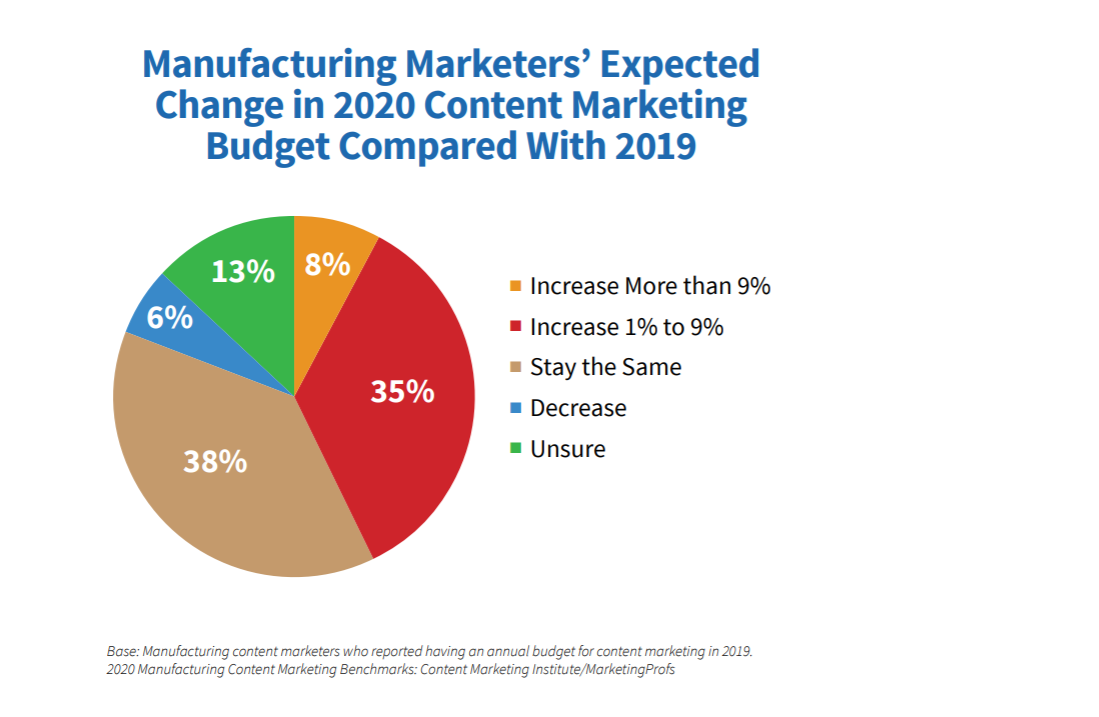
While there have not been many changes to budget size, it's important to note that 6% of marketers expected their budget to decrease.
Priorities in Content Marketing
This year, 56% of manufacturing marketers expect their organization to prioritize content quality and quantity over any other concerns. This is a step in the right direction because, through the creation of quality content, they can set up their organization as an authority within their niche.
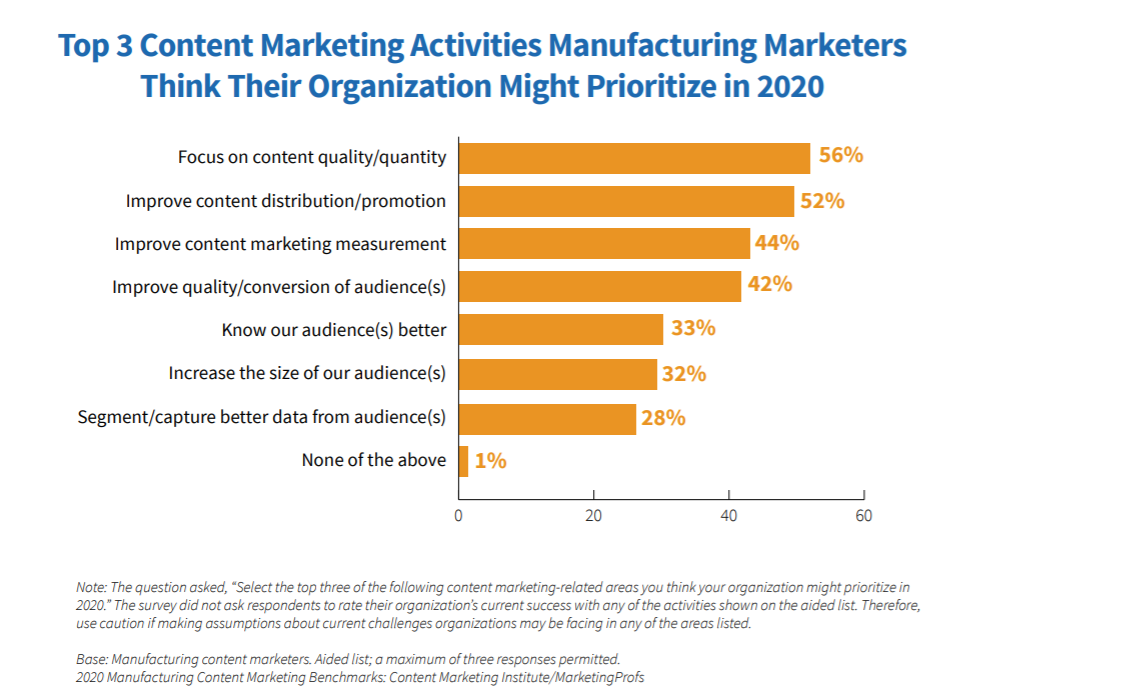
Other priorities include improving content distribution and promotion (52%) and improving their content marketing measurement (44%), which consists of the metrics they use to determine the effectiveness of their content strategy.
Future Challenges for Manufacturing Marketers
Building a strong content marketing strategy comes with its set of challenges. The setbacks marketers face in 2020 are similar to those they encountered a year ago.
This includes overcoming the traditional marketing and sales mindset (55% vs. 50%), creating content that will appeal to multi-level roles within their intended audience (53% vs. 68%). While it was not an issue in 2019, 48% of marketers now face the challenge of distinguishing their products and services from direct competitors'.
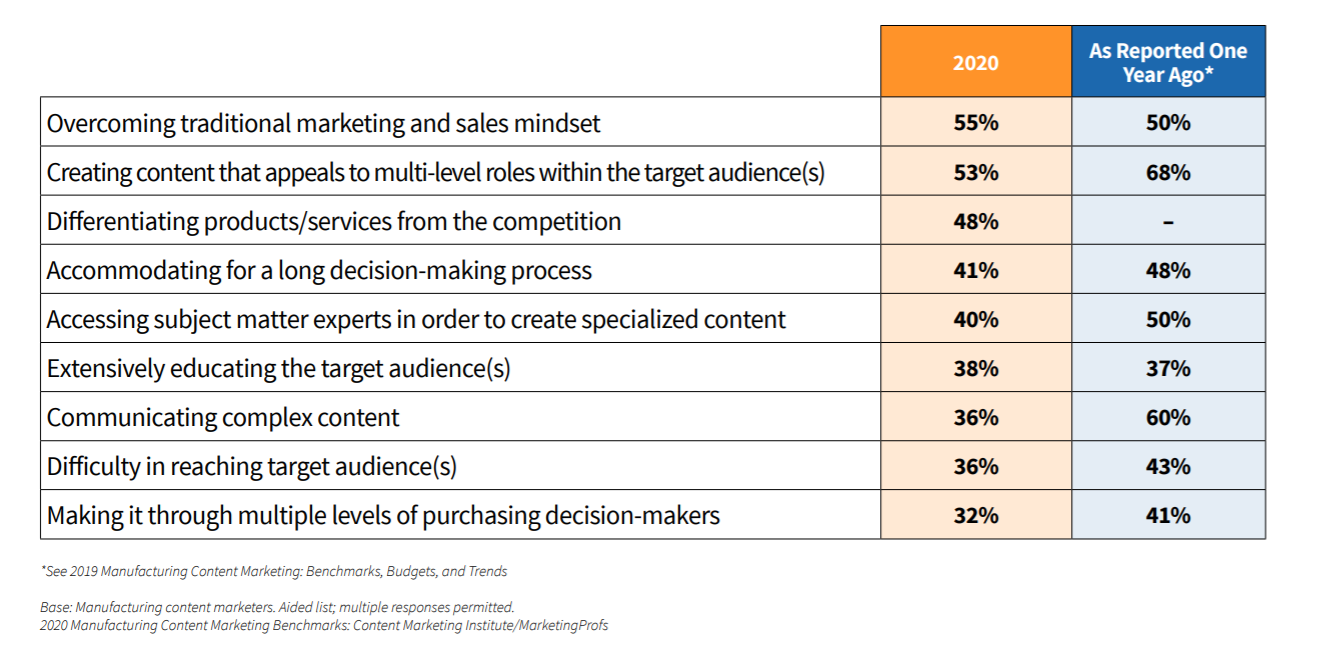
On the flip side, fewer manufacturing marketers feel that communicating complex information is a setback, 60% down to 36% this year. This serves as proof that content marketing in the manufacturing industry is growing. Year by year, marketers in the industry are tackling and overcoming the content marketing struggles many face.
Conclusion
Once again, we'd like to thank the Content Marketing Institute, alongside Marketing Profs, Sitecore, and IEEE GlobalSpec, for putting together this survey and its results.
It's important for manufacturing companies and organizations like Theia Marketing that serve the industry to stay on top of the current content marketing trends that can influence and affect the way we create, distribute, and analyze our content strategies.




